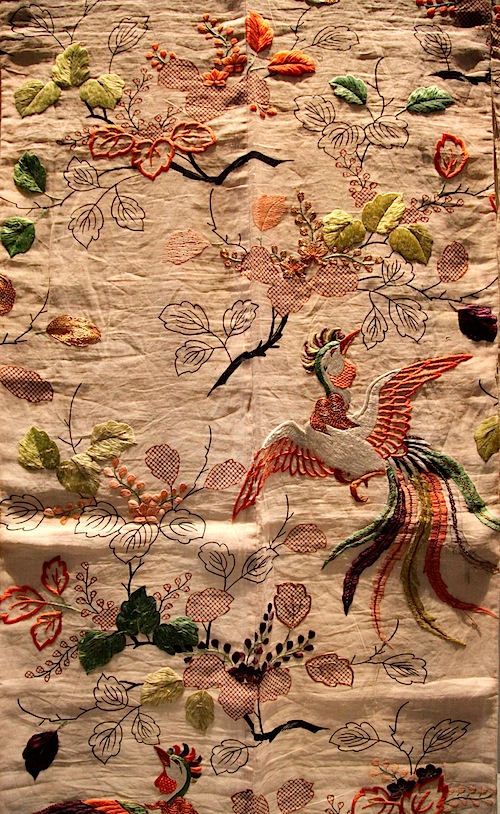One of the stereotypes of the Japanese has been that they don't so much as 'create' things as take an original idea from somewhere else and then continuously improve on it until it is perfected. Exhibits A, B & C: the car industry (American and German), consumer electronics (American) and ramen noodles (originally Chinese). Perhaps the ultimate example can be found in Toto's magical toilets - one of which graces our hotel room.
As we explored the Tokyo National Museum it became evident that Japan is the ultimate remix culture. They've adopted ideas from other Asian nations and folded them into their own cultural identity. Buddhism came from the Korean peninsula in the sixth century or so. The Chinese gave Japan painting and calligraphy techniques. Heck, even ramen noodles are originally Chinese.
With that in mind, here are some photos of different sets of items from the museum. Have fun seeing if you can find other cultural references.
Japanese Painting & Drawing
The following are byobu folding screens that were set up temporarily as background decor, for privacy or to stop drafts. They're a subset of what are called shoheki-ga paintings. The choice of subject was determined by the nature of the room (e.g., castle or temple), it's function and the style of the times.


I also quite liked the detail in Ishibashi-Yama, Enoshima and Hakone by Kano Yosen-In (1753-1808):
 This lovely lady is a ghost; the image is the backdrop of a Kabuki play:
This lovely lady is a ghost; the image is the backdrop of a Kabuki play: Kimonos
Kimonos
The museum has a beautiful selection of kimonos. Here are a series of close-ups:




 Samurai, Armour & Swords
Samurai, Armour & Swords
The museum has an interesting description of how the Samurai's traditions evolved:
The military elite held the political power in Japan for about 700 years spanning from the late 12th century until the Meiji Restoration in 1868. Whilst taking the culture of the nobility, the former authority in power, as an example, they absorbed Buddhist- and common culture to create a pragmatic and powerful culture of their own.
The hitatare and kamishimo, originally commoner's garments, evolved into the formal attire of the bafuku (military government) with time, the kosode kimono and dofuku short coat were also favored by the samurai.
The sword was the single most important equipment for a samurai, and was also appreciated as the best possible gift bestowed or presented to the shogun and the daimyos (feudal lords). Swords were usually worn in pairs of one long and one short type, such as a pair of a tachi with koshigatana, or a katana with wakizashi. Indoors, only the short sword was permitted. The style of sword mountings differed in accordance with the owner's rank, or with the attire and fashion of the age. Sword mountings, armor, and saddlery were produced with the best available skills of the various genres of decorative arts, such as lacquerware and metalwork. In the Edo period (A.D. 1603 - 1868), military equipments were (sic) treasured and handed down over generations as symbols of social status and historical importance of the individual daimyo clan.






